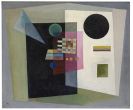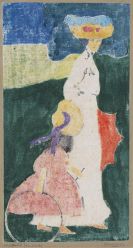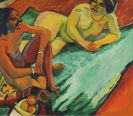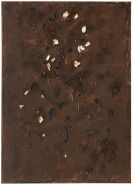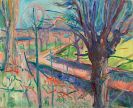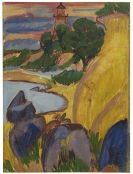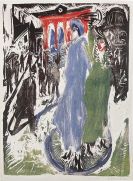
Wassily Kandinsky
Moskau
1866 -
Neuilly-sur-Seine
1944
The Russian painter, graphic artist and art theorist Wassily Kandinsky was born in Moscow on 4 December 1866. As of 1886 he studies law and economy at the Moscow University and successfully completes his doctor's degree in 1893, but he soon changes his career plans and becomes a painter. In 1896 Kandinsky moves to Munich where he attends the private art school of Anton Azbé for two years, afterwards he studies at the Munich academy under Franz von Stuck.
In 1901 Wassily Kandinsky is co-founder of the artists' association "Phalanx", he also teaches at the group's art school. Gabriele Münter, with whom he was soon in a love relationship, is among his students. In 1904 they go on journeys through Europe and to Tunis, in 1906/07 they spend some time in Paris. The return to Munich marks the beginning of a very labor-intensive period for Kandinsky, he goes on painting excursions with Gabriele Münter to the surroundings of the Staffel Lake, where Münter acquires a house in Murnau in 1909. This is where they spend the summer months together, inviting numerous artist friends from Munich, among them Alexej von Jawlensky, Marianne von Werefkin, Franz Marc and August Macke.
The "Neue Künstlervereinigung" (New Artists' Association) is founded in Munich in 1909. At this time Wassily Kandinsky already has ideas of a new form of art, in which he wants to disassociate content from the object, colors and forms are to be used freely, always following the artists' inner urge. The first abstract painting is made around 1911 - but "Komposition V" is too progressive even for some members of the "Neue Künstlervereinigung" and they do not admit it to be shown in their exhibition. As a sign of protest, Wassily Kandinsky and Franz Marc found the artists' group "Der Blaue Reiter" (The Blue Rider), organizing the group's first exhibition in the Munich gallery Thannhauser at the same time, the second exhibition takes place in the Munich art shop Hans Goltz in 1912. In a short period of time important writings are published, by means of which Wassily Kandinsky formulates his ideas on art. Together with Franz Marc he works on the almanac of the "Blaue Reiter" (Blue Rider). In 1912 Wassily Kandinsky's writing "Über das Geistige in der Kunst" (On the Spiritual in Art) is published by Piper in Munich.
He moves to Zurich with Gabriele Münter in 1914, but they break up their relationship and he returns to Moscow where he is appointed professor for art. In 1921 he is in Berlin, and is called to the Bauhaus in Weimar a year later. In 1926 Wassily Kandinsky, Paul Klee, Lyonel Feininger and Alexej von Jawlensky start the exhibition collective "Blaue Vier" (Blue Four). Kandinsky's second art theoretic writing "Punkt und Linie zu Fläche" (Point and Line to Plane) is also published in 1926.
The Bauhaus, which had moved to Dessau in the meantime, is closed in 1932. In late 1933 Kandinsky emigrates to Neuilly-sur-Seine near Paris, where a new period of creation begins, however, he remains largely isolated from the international art scene.
Wassily Kandinsky dies on 13 December 1944 in Neuilly-sur-Seine.
Would you like to sell a work by Wassily Kandinsky?
Infos for seller
